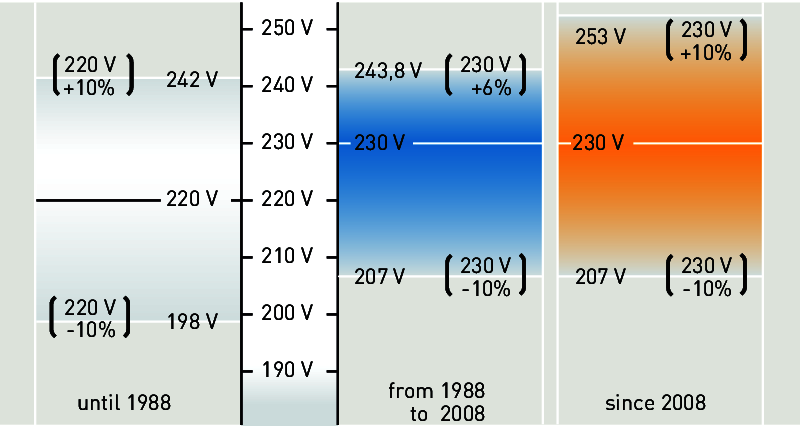An important prerequisite for the single European market as well as international trade is a uniform nominal mains voltage. Varying mains voltages, e.g. 380/220 V in many countries of continental Europe and 415/240 V in Great Britain and many countries of the former Commonwealth used to constitute significant obstacles to world trade. Currently, nominal voltage is 100 V in Japan, 240 V in Australia, 220 V in Canada and 230 V+10% (= 253 V) in Great Britain. In Germany and other countries, the nominal mains voltage conversion from 380/220 volts to 400/230 volts began in 1988. It was based on the international standard IEC 38 "IEC standard voltage" from 1983 (today: IEC 60038/EN 60038). This norm initiated a global unification process for nominal voltages. The intended uniform voltage the process aims at is 230 volts between outer and midpoint conductor/400 volts between the outer conductors with a tolerance of -10% (meaning 207/360 volts) to +10% (meaning 253/440 volts).
Mains voltage

Naturally, a conversion of this nature requires a long period of time to facilitate the use of electrical equipment in the power supply system until the end of its respective service life. In Germany, the process was concluded after 25 years (from 1983 to 2008).